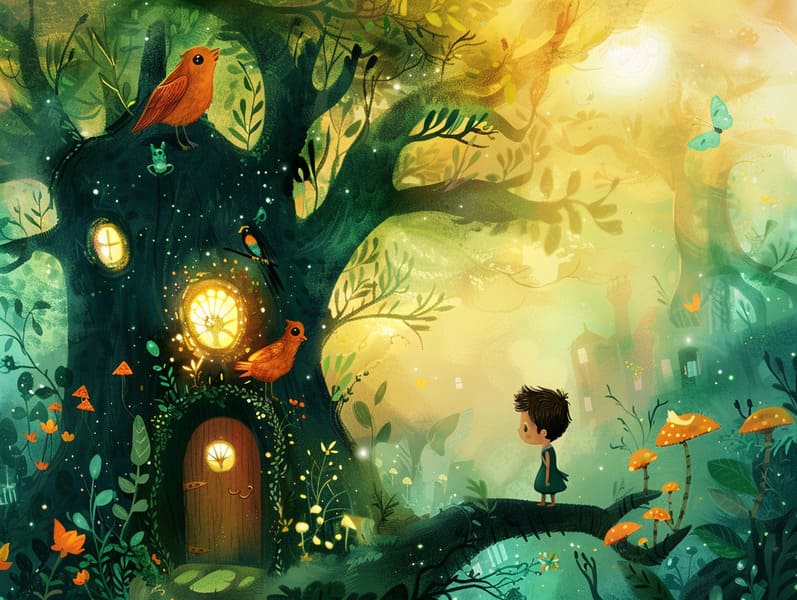Exploring the Roots of Old Fairy Tales with Their Immortal Wonder.
Exploring the Roots of Old Fairy Tales with Their Immortal Wonder.
Blog Article

Vintage fairy tales have legendary status. These stories have been relayed from one generation to the next centuries before they were ever put on paper. They developed from a variety of civilizations, including Eastern traditions. They were initially shared among elders, often carrying themes and messages pertaining to the societal norms and beliefs of the time.
The Grimm brothers, the two Grimm brothers, were among the first to collect many of these beloved fairy tales. Their anthology, "Grimm's Folk Tales," included classics like "The Little Glass Slipper," "Hansel and Grethel," and "The True Story of Snow White," which have since become classics in the world of iconic fairy tales. Similarly, Hans Christian Andersen's imaginative stories, such as "The Story of the Little Mermaid," and "The Ugly Duckling," have captivated hearts worldwide, guaranteeing their place in the pantheon of classic fairy tales.
Despite their historical roots, traditional fairy tales remain as important as ever, especially as children's bedtime stories. These delightful tales are now available in multiple formats, including gorgeously illustrated books, delightful animations, and internet fairy tales.
Their enduring popularity can be connected to several charming aspects:
Ethical Lessons: Classic fairy tales often whisper important moral lessons. Tales like "The Wolf and the Liar" teach the merit of integrity, while "The Story of the Tortoise and the Hare" illustrate the traits of resolve and humility. These narratives offer little ones clear distinctions between truth and falsehood, molding their moral compass in a gentle yet profound way.
Empathy and Understanding: Classic fairy tales frequently involve characters facing challenges and problems, encouraging young readers to relate with their struggles and champion their triumphs. For instance, "Beauty and Her Beast" conveys the value of looking deeper to know the true essence of a character, cultivating warmth and comprehension.
Cultural Awareness: Many ancient fairy tales are deeply embedded in the cultural contexts from which they developed. Learning from these narratives can provide illuminating insights into different ways of life, advancing a sense of cultural respect and recognition.
Creativity and Fantasy: The supernatural elements in fairy tales—enchanted objects—enliven children’s dreaming abilities. These fairy tales guide readers to magical realms, enhancing fantastical thinking and a sense of enchantment that lasts a lifetime.
Old fairy tales are not only captivating but also enlightening. They act as delightful tools in enhancing various brain and heart skills in young ones. When timeless fairy tales are narrated, they cultivate language proficiency by presenting new language and complicated sentence structures. This practice also advances listening abilities and concentration, as kids keep up with the story, anticipating to see what happens next.
Furthermore, debating the themes and characters of ancient fairy tales can develop thought processes and thinking skills. Young readers are led to pinpoint patterns, predict happenings, and figure out cause and effect. These discussions also facilitate children speak out their thoughts and feelings, fostering their emotional intelligence.
In today’s electronic age, the availability of online storybooks has made these stories more available than ever. Online resources and programs feature extensive collections of ancient fairy tales that can be seen or listened to anytime, anywhere. Fairy tales spoken are particularly widespread, providing an interactive way for little ones to delight in these fantastical tales. Read-aloud books and spoken videos bring characters and settings to life, often complemented by mesmerizing musical scores and songs that enrich the tale-telling adventure.
The timeless allure of traditional fairy tales lies in their ability to transform to changing times while continuing with their central messages. Contemporary modernizations of these stories often incorporate more varied characters and modern settings, making them meaningful to today’s audience. However, the fundamental themes of boldness, kindheartedness, and rightness remain unchanged, continuing to appeal to children of all ages.
Ancient fairy tales also offer a sense of reassurance and predictability. They confer upon a organized narrative with a apparent beginning, middle, and end, often closing with the finalization of conflicts and the triumph of morality over wickedness. This certainty can be soothing for kids, allowing a sense of consistency in an ever-changing world.
Ancient fairy tales continue to charm and educate new generations, maintaining their majesty and impact in modern society. As nighttime stories for kids, they feature a perfect blend of fascination and comprehension, enriching moral values, empathy, and creativity. The abundance of web-based fairy tales and the favor of fairy tales narrated certify that these timeless stories remain attainable to new generations.
By continuing and passing on these stories, we continue to venerate the rich tapestry of cultural legacy and cultural heritage. Whether you are delving into a artistically illustrated book, browsing a web collection, or playing an spoken story, the magic of traditional fairy tales is always within reach. These stories remind us of the eternal nature of fairy tales and its ability to connect us across time and space.
Even if you are viewing a vividly check it out illustrated book, accessing a online library, or listening via an voice book, the allure of classic fairy tales is always within reach.
These fairy tales highlight of the enduring essence of stories and its ability to gather us across epochs and places, establishing a link that fascinates and enlightens alike.